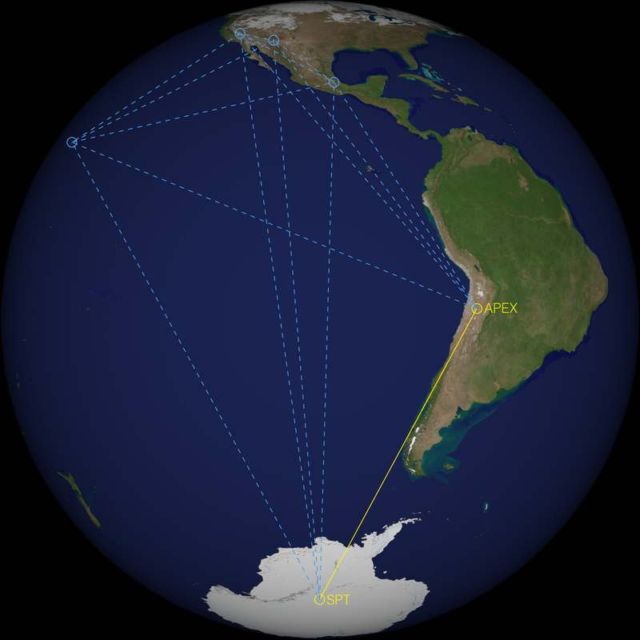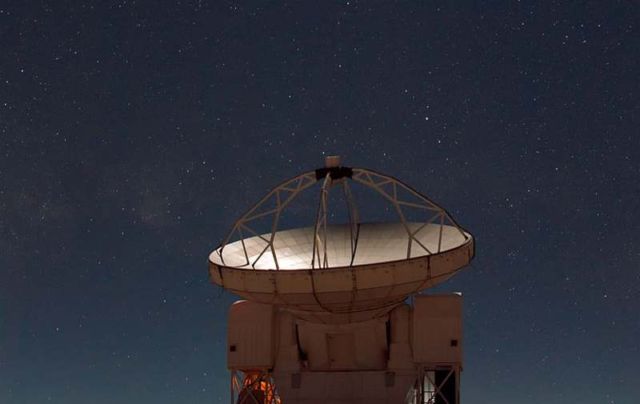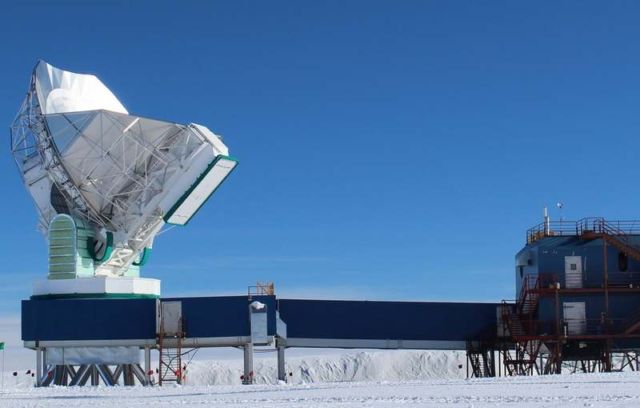A virtual telescope as big as planet Earth, will take detailed images of the very edge, or “event horizon,” of the supermassive black hole at the center of the Milky Way galaxy.
Above: The 10-meter South Pole Telescope, at the National Science Foundation’s Amundsen-Scott South Pole Station, joined the global Event Horizon Telescope array in January. Image credit Dan Marrone/UA
A team led by the UA has added Antarctica’s largest astronomical telescope to the Event Horizon Telescope — a virtual telescope as big as planet Earth — bringing the international EHT collaboration closer to taking detailed images of the “event horizon,” of the supermassive black hole at the center of the Milky Way galaxy.
Astronomers have extended their instrument to the bottom of the Earth — the South Pole — thanks to recent efforts by a team led by Dan Marrone of the University of Arizona.
Assistant professor Dan Marrone, in the UA’s Department of Astronomy and Steward Observatory, and several colleagues flew to the National Science Foundation’s Amundsen-Scott South Pole Station in December to bring the South Pole Telescope, or SPT, into the largest virtual telescope ever built — the Event Horizon Telescope, or EHT. By combining telescopes across the Earth, the EHT will take the first detailed pictures of black holes.
 The South Pole Telescope and the Atacama Pathfinder Experiment joined together in a “Very Long Baseline Interferometry” experiment for the first time in January. The two telescopes simultaneously observed two sources — the black hole at the center of the Milky Way galaxy, Sagittarius A*, and the black hole at the center of the distant galaxy Centaurus A — and combined their signals to synthesize a telescope 5,000 miles across. Image credit Dan Marrone/UA
The South Pole Telescope and the Atacama Pathfinder Experiment joined together in a “Very Long Baseline Interferometry” experiment for the first time in January. The two telescopes simultaneously observed two sources — the black hole at the center of the Milky Way galaxy, Sagittarius A*, and the black hole at the center of the distant galaxy Centaurus A — and combined their signals to synthesize a telescope 5,000 miles across. Image credit Dan Marrone/UA
Marrone, explains:
“Now that we’ve done VLBI with the SPT, the Event Horizon Telescope really does span the whole Earth, from the Submillimeter Telescope on Mount Graham in Arizona, to California, Hawaii, Chile, Mexico, Spain and the South Pole. The baselines to SPT give us two to three times more resolution than our past arrays, which is absolutely crucial to the goals of the EHT. To verify the existence of an event horizon, the ‘edge’ of a black hole, and more generally to test Einstein’s theory of general relativity, we need a very detailed picture of a black hole. With the full EHT, we should be able to do this.”
 The Atacama Pathfinder Experiment telescope sits atop the plateau of Chajnantor in the Chilean Andes, more than 16,000 feet high. The plane of our galaxy — the Milky Way — can be seen in the sky looking like a band of faint, glowing clouds. To the left of APEX is the central region of the Milky Way, where a supermassive black hole lurks at the core of our galaxy. Image credit ESO/B. Tafreshi/TWAN/twanight.org
The Atacama Pathfinder Experiment telescope sits atop the plateau of Chajnantor in the Chilean Andes, more than 16,000 feet high. The plane of our galaxy — the Milky Way — can be seen in the sky looking like a band of faint, glowing clouds. To the left of APEX is the central region of the Milky Way, where a supermassive black hole lurks at the core of our galaxy. Image credit ESO/B. Tafreshi/TWAN/twanight.org
Read more at uanews






Leave A Comment